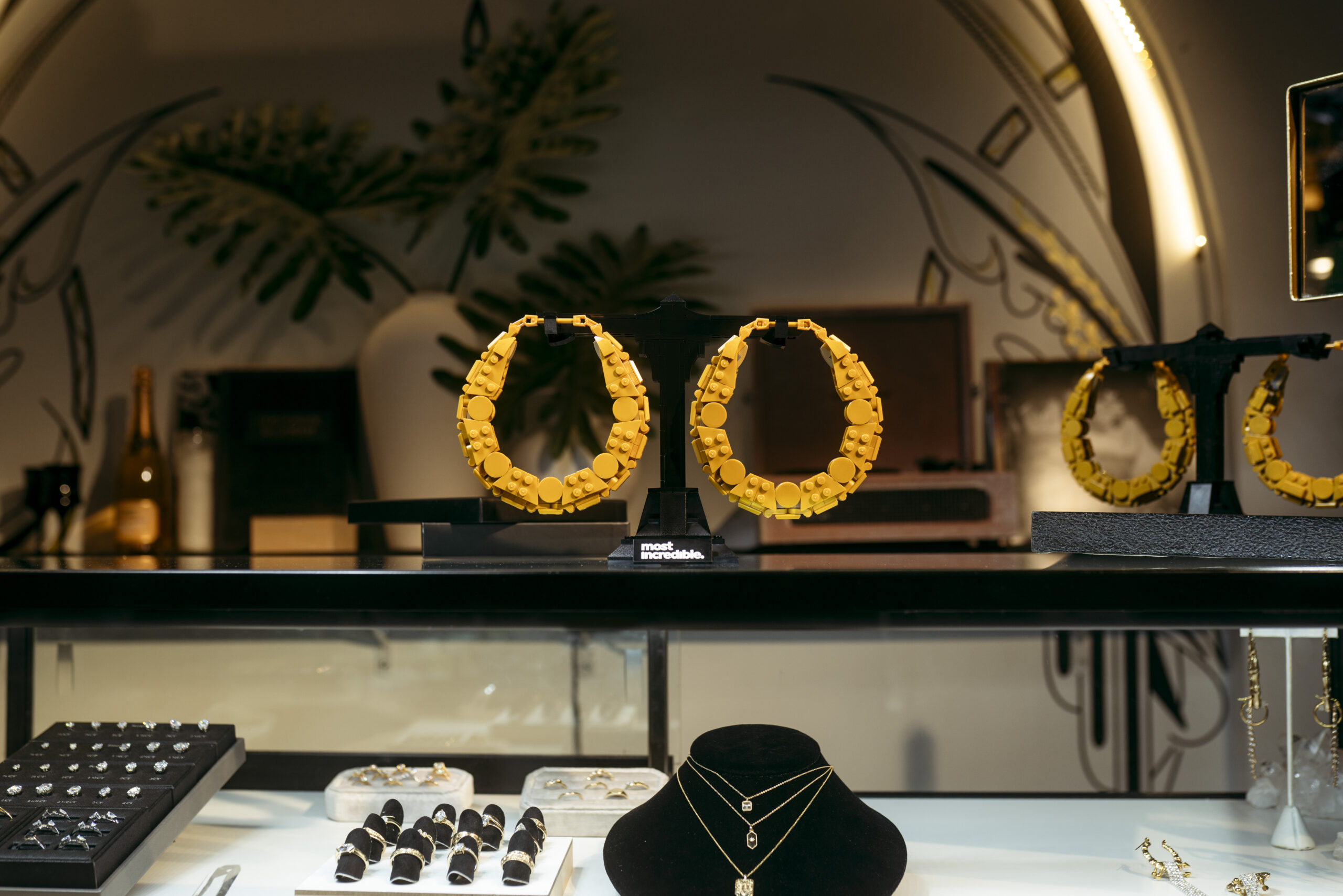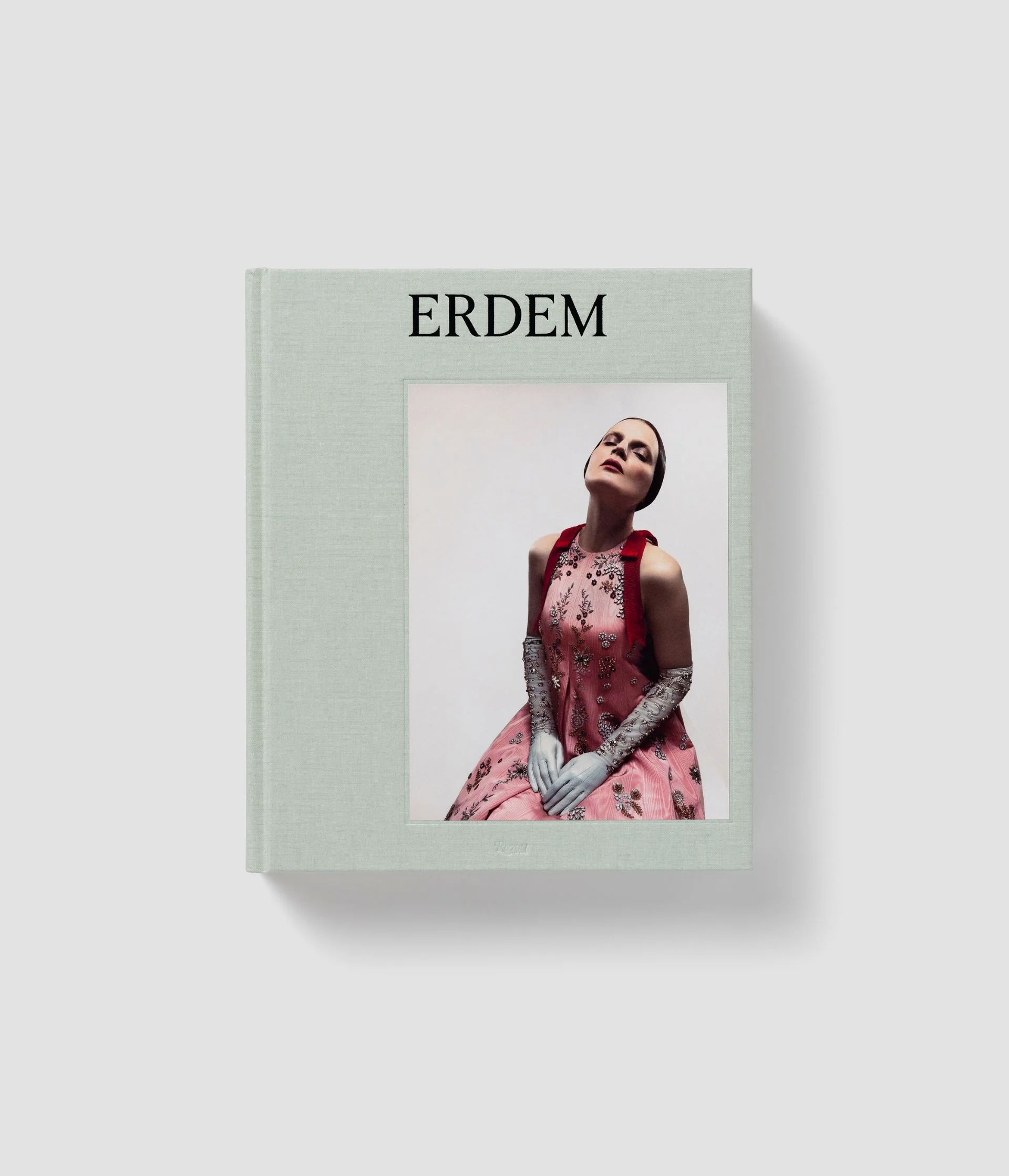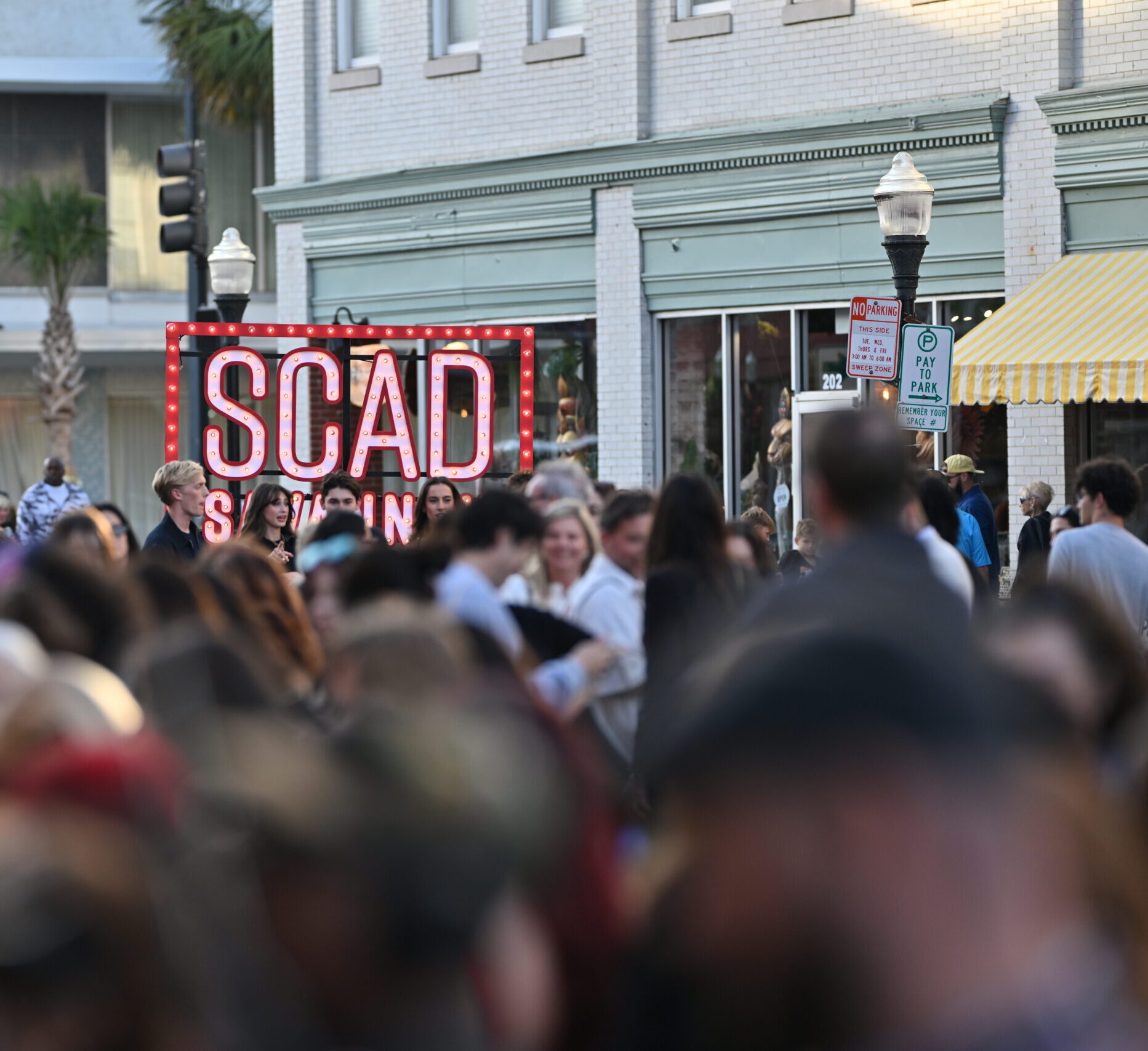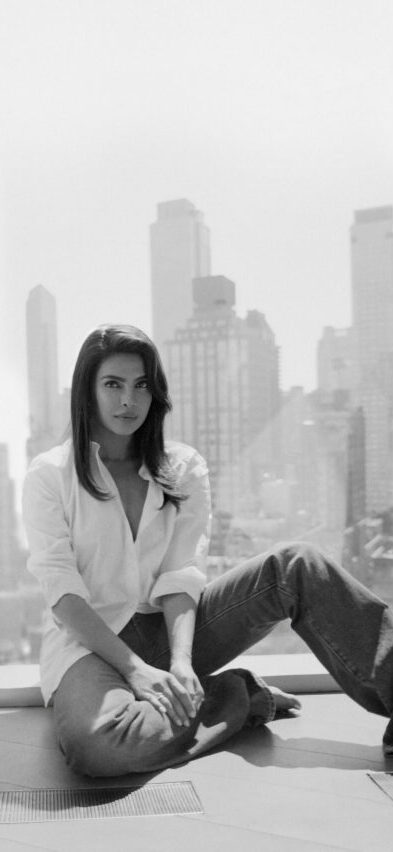
From Nas
to Now: Jennie Baptiste’s New Exhibition Bridges Generations
Friends (from ‘Wale Adeyemi Fashion Shoot’). Photography: JENNIE BAPTISTE
She shot everyone from Run-D.M.C. to Jay-Z by the time she was 30. The visionary photographer’s new show proves that her three decades of capturing Black British culture and sound are still shaping the conversation.
The very first musicians Jennie Baptiste ever photographed was Run-D.M.C. She was in her early teens and she and her best friend went to get an autograph at the HMV record store on Oxford Street in London. “It was just after “Walk This Way” with Aerosmith had come out. I got the 12 inch, I got that signed, and then I took some pictures,” she recalls on a Zoom call from her home. “It was just an idea that I had and I liked the experience. And then I just kept on doing it.”
That teenage whim led to a 30-year groundbreaking career in photography that is the subject of a stunning new exhibition, Rhythm and Roots, at Somerset House, running until January 4. It showcases Baptiste’s unparalleled portfolio of Black British youth culture, her unique way of capturing her subject and featuring people and subcultures that no one in mainstream media was covering in the ’90s — from ragga to Black fashion designers to mental health and Black men. And every one meant something to her.
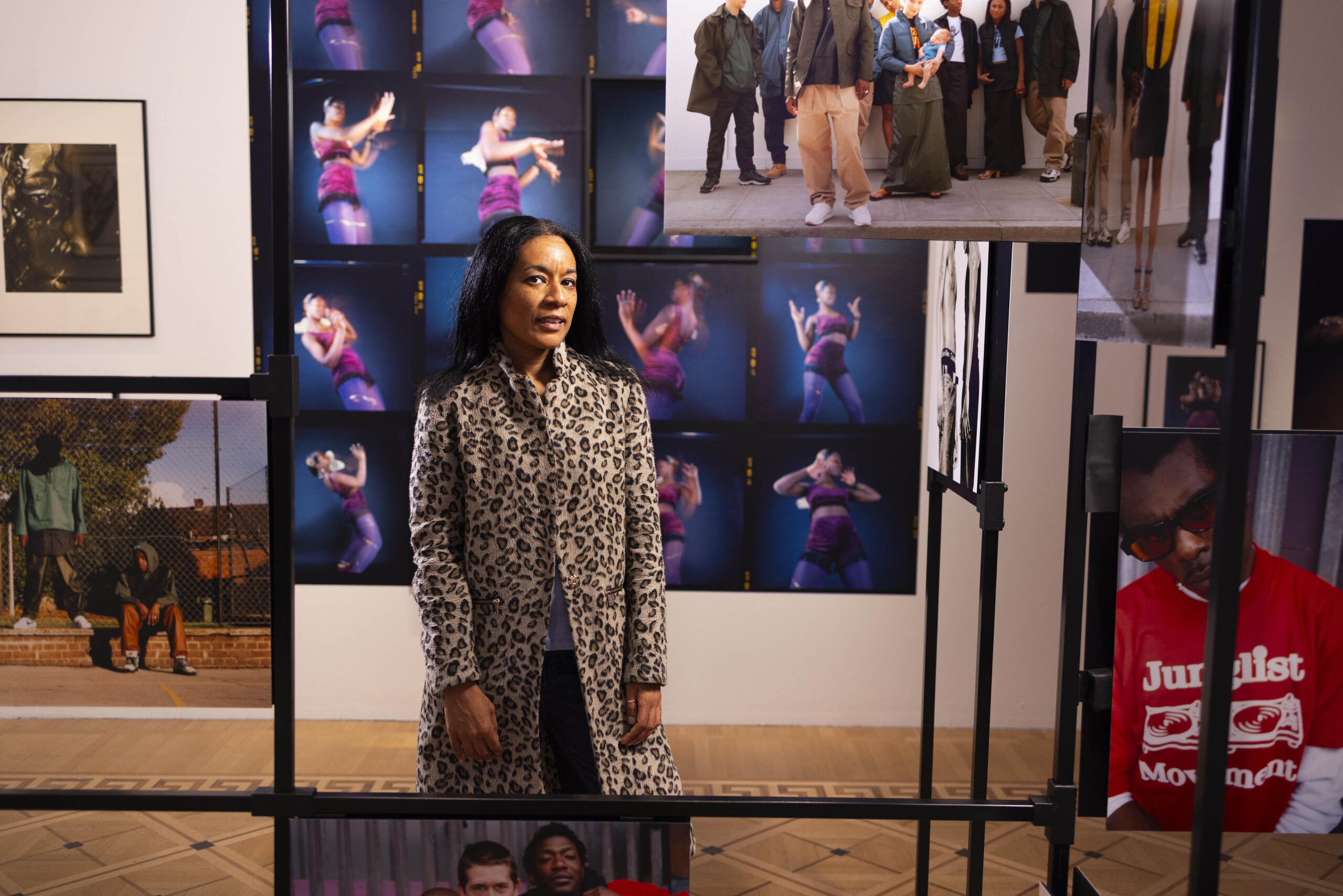
Jennie Baptiste in her exhibition, Jennie Baptiste: Rhythm & Roots at Somerset House, London. Photography: DAVID PARRY/PA MEDIA ASSIGNMENTS
“Some of the people that I came up with, I photographed because I decided I wanted to just photograph them. Nobody commissioned me. It was a case of you know each other, and I wanted to use my eye with purpose,” she says.
Her work is bold and visually lyrical and that’s because it’s intrinsically tied to her love of music. One part of the exhibition she was adamant about including was her 1999 exhibition Revolutions @33 1/3 rpm, her examination of the hip-hop DJ scene in London. It’s on display with headphones streaming old school mixes from the DJs she shot. “I knew I wanted that in there, because it would speak to another generation. We now have streaming. It’s no longer mix tapes and records, listening stations and record stores. Those hardly exist. It’s a great intergenerational conversation.”
We spoke to her about her groundbreaking career and where she’s headed next.
EE72
Congratulations on the exhibition. Do you have a favorite photo?
Jennie Baptiste
That’s a tough one. Definitely the Roots Manuva [for Fatboss magazine] is one of my favourites, purely because it pushed boundaries at the time: a Black male hip-hop artist with makeup on his face. Fortunately, I had a working relationship with Rodney because I’d photographed him twice already, and he was like, “Jen, just do whatever you want to do. I believe in you.” I’ve had a lot of my own creative input from the dance hall series. It’s my vision. It comes through in the photograph of Estelle and Ty.
JB
That’s one of my favourites, too. Within hip-hop culture, in a lot of the imagery you don’t see much love or much unity that is there. I’ve known Estelle since she was 19. I got them in the studio in South London, in Brixton, and I said, “I want to recreate like we’re in a club and you’re going to chat her up but she’s gonna make it kind of cheeky, but lovingly at the same time.” All three of us knew each other, so they just had fun. The Nas photo is also one of my favourites. I was put on the spot for that. It was shot at Sony Music, the record labeI had about an hour allocated, and I was going to take him into Soho because Illmatic had just been released and I thought, the streets of Soho are gritty and all of that, and I’ll shoot black and white. Because I was the last photographer of the day, I was told, “I’m really sorry, but you’ve only got 15-20 minutes, and it’s going to be in the basement, in the kitchen.” Because of my art background, I had experimented a lot in terms of different graphic techniques and I had to think on my feet. The floor was translucent, and it had light coming from underneath. I was like, Okay, I’m going to shoot the floor, and then I’m going to shoot Nas. I got him to sit on a table because it was a kitchen. And then I shot him, and then I sandwiched the negs by putting the negs on top of each other in the color of the dark room. And I printed it.
EE72
What was it like to be a young Black woman working in a predominantly white male field? Was there pushback?
JB
There were a few occasions where it was said, “you’re a really good photographer, but I just don’t think that they would want to deal with a Black woman.” At times, I did take a step back, because it was mentally hard to realize that my peers — everyone that I know is male and they’re still going from the 90s — didn’t have to face any of that scrutiny. And then, sometimes, I’m not gonna name the artists, but there were a few male artists who, once they saw me, they were like, “you’re not photographing me.” Again, based on what I looked like. This was pre-internet. I decided to carry prints with me as a safeguard to show what I shot. So I carried Nas. It worked. I would show them that print, and then they were like, “Oh you shot Nas. Okay.”
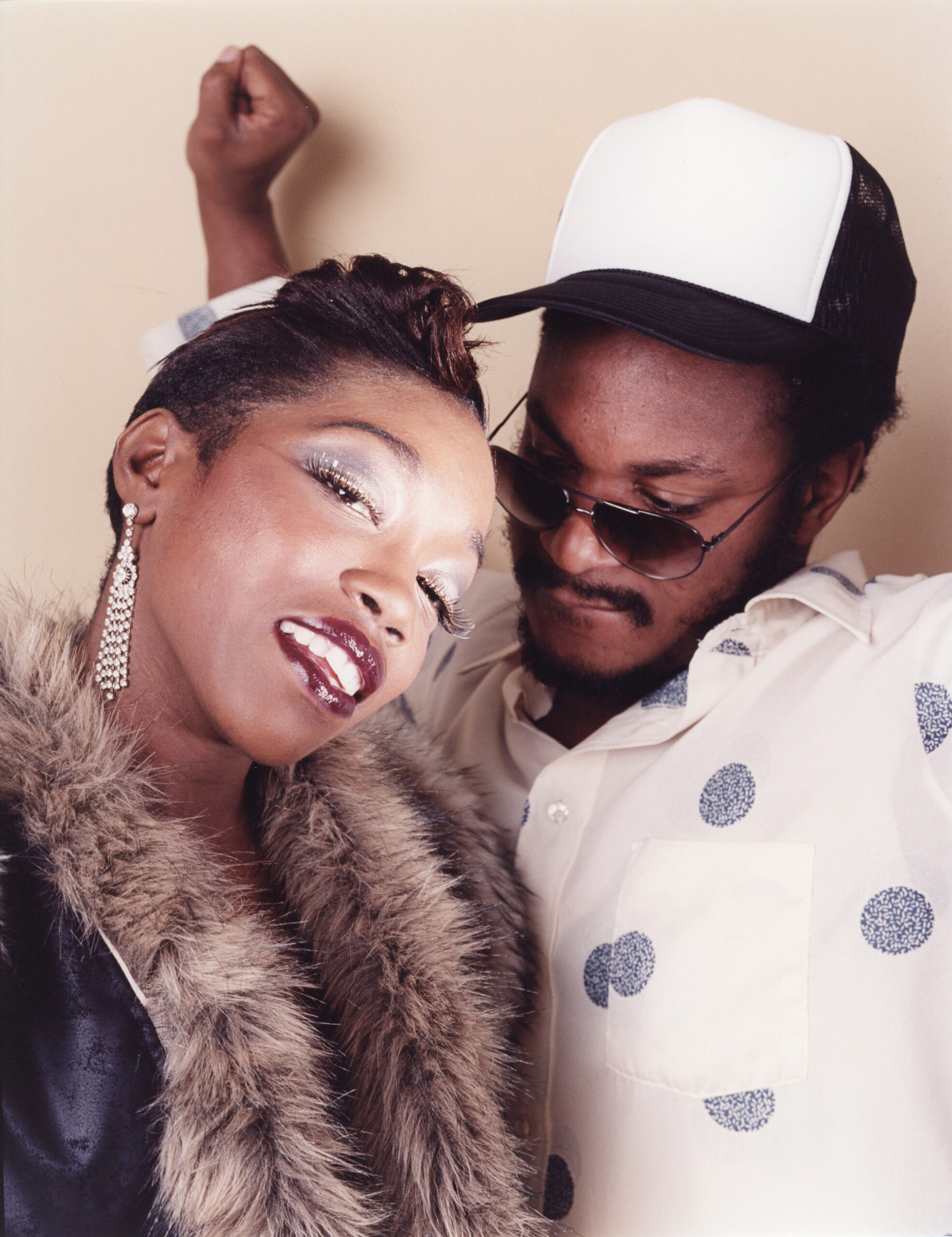
Estelle and Ty, 2003. Photography: JENNIE BAPTISTE

Roots Manuva, Fatboss Magazine, 1999. Photography: JENNIE BAPTISTE
EE72
That’s really tough.
JB
Yes, but it’s character building. I’m in a space whereby you can only keep building your character in order to survive. Because it can be a cutthroat industry. Looking back, I recognized the fact that we were all young. And when I was 20 I probably looked about 15. And so whilst it doesn’t mean that it’s right to question my ability, it was a time period where equality and diversity wasn’t necessarily pushed out there. For me, there’s no hard feelings. It was a learning. I used it as a springboard to think outside the box.
EE72
Your work spans both photography, art, music, fashion — how do those practices inform each other, and where do they diverge?
JB
It was tough. Starting out, it was like, “Okay, you’re either this or you’re that. You can’t do all these things.” But even as a young person, I was very determined. The careers officer said to me at 15, “you can’t be a photographer.” I was like, “Okay, you can’t help me.” And I walked out the room, I had that belief in myself. Because my mom had a non-typical career as well. She was an electronics engineer and trained from the ground up. So I didn’t see it as unachievable, it was something that I was going to do and no one was going to stop me, and I was going do it the way that I wanted to do it.
EE72
And your mom gave you your first camera?
JB
She gave me a 110 when I was 10.
EE72
How did you know this was what you wanted to do by the time you were a teenager?
JB
I had three older sisters and they all had cameras and I was influenced by what they had. And we had a family album, and I would look at it a lot. We were very much into music; I bought my first record when I was 10, and spent my pocket money on records and pop magazines. This was the ‘80s, you could go to HMV and get your record signed and one summer my best friend and I said, let’s go up to Oxford Street. We put our money together. We had enough to buy one record. And then I said, I’m going to bring my camera and ask to take a photo. I want to be different; I don’t want to be like all the other girls asking for a kiss. And so that’s how it started. Then, at school, there was a room where we realized it was a photography studio. We asked if someone could teach us and luckily enough there was a supply teacher.
EE72
If you could shoot anyone in the world next, who would it be?
JB
Janet Jackson. If I had the opportunity, it would be her dancing, because she’s known for that, but I’ve never really seen movement within the imagery. Really slow shutters and so on. Beyoncé would be another one, but really stripped back. Whenever I shoot somebody, whether it’s a famous person or not, I want a different element of their persona that I haven’t seen before.
EE72
Who is inspiring you now? What albums are you listening to?
JB
Little Simz! What else do I listen to? A lot of older music now. To be honest, I probably sound like an oldie.
EE72
Fair! Okay, who is on your playlist?
JB
A whole mixture of people from George Michael to Janet Jackson to Beyoncé to Tupac. It depends on my mood and what I’m going through. Over the past three months it’s been classical music, to be honest. I think because I had so much on, I just needed music that was kind of background and soothing. And the vibrational frequency of classical music is very high, and so I’m very aware of that and attuned to that.
This interview has been edited and condensed.
A soundtrack to her creative process, these are the tracks Jennie had on repeat while bringing the exhibition to life.
